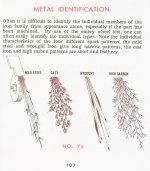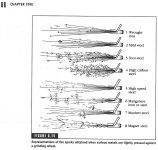Dargo
Super Member
- Joined
- Mar 6, 2004
- Messages
- 5,974
- Location
- S. IN
- Tractor
- Jinma, Foton, TYM, Belarus, Yanmar, Branson, Montana, Mahindra and maybe some green and orange too.
I have had a Dunham Culti-Packer (that's how it's written in block lettering in the steel) that has two rows of steel wheels and is about 9' wide. It was made by Dunham Co. in Berea, OH according to the markings. I've had it for many, many years and I bought it from an auction from an old farmer who had it. He was in his upper 90's when he passed away and there is no telling how long he had it. Anyway, the outer bearings, if you would call it bearings, are pretty well gone. I took the end cap off of one end and it just looked like there was this giant cotter pin through the axle and a big washer. On the inside where the steel wheels are, it's just open and any grease I put in the end caps just falls out from the center.
Is anyone familiar with these? I'm wanting to get some sort of bearings put in the four end caps or something to keep this from seizing up when pulling it. I am thinking about getting some bearing and a pillow block setup, but the axle shaft is so galled and scored that I'm not sure that that would work either. I don't want to go through all the trouble of taking the axles out and having it machined or replaced. Any ideas on a relatively simple but effective fix?
Is anyone familiar with these? I'm wanting to get some sort of bearings put in the four end caps or something to keep this from seizing up when pulling it. I am thinking about getting some bearing and a pillow block setup, but the axle shaft is so galled and scored that I'm not sure that that would work either. I don't want to go through all the trouble of taking the axles out and having it machined or replaced. Any ideas on a relatively simple but effective fix?


